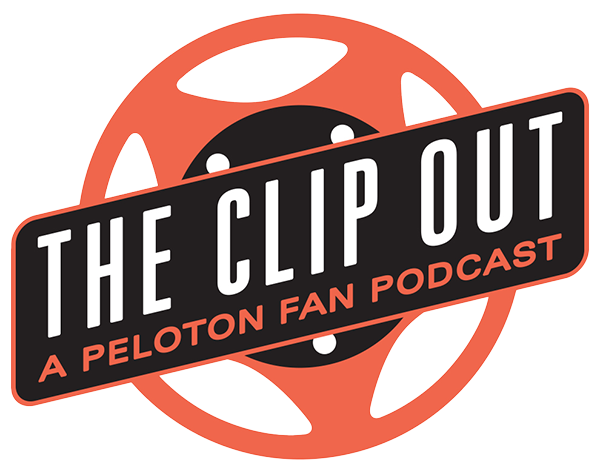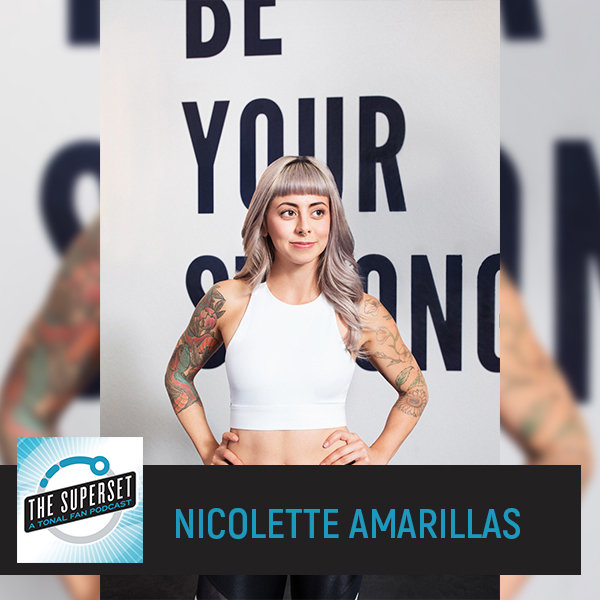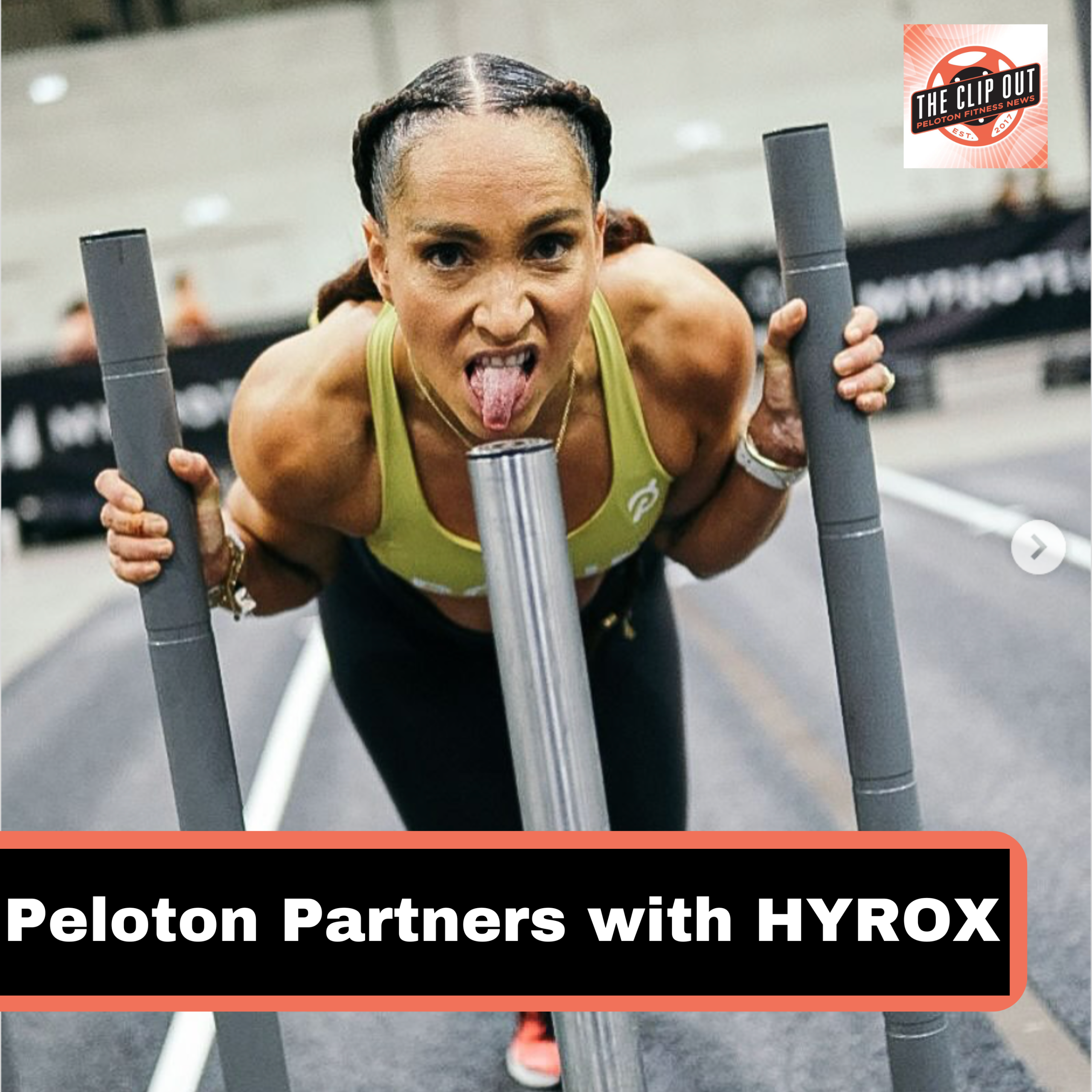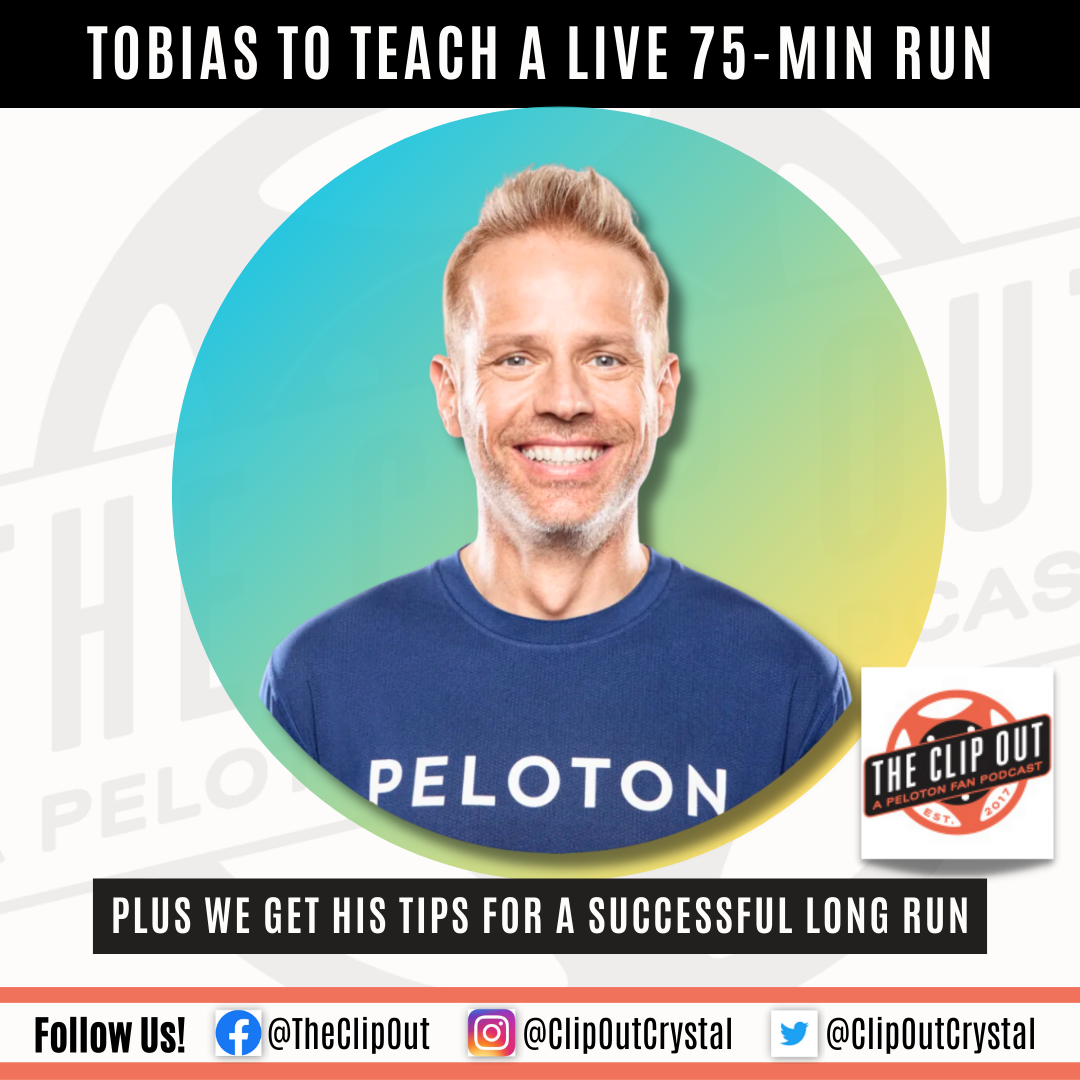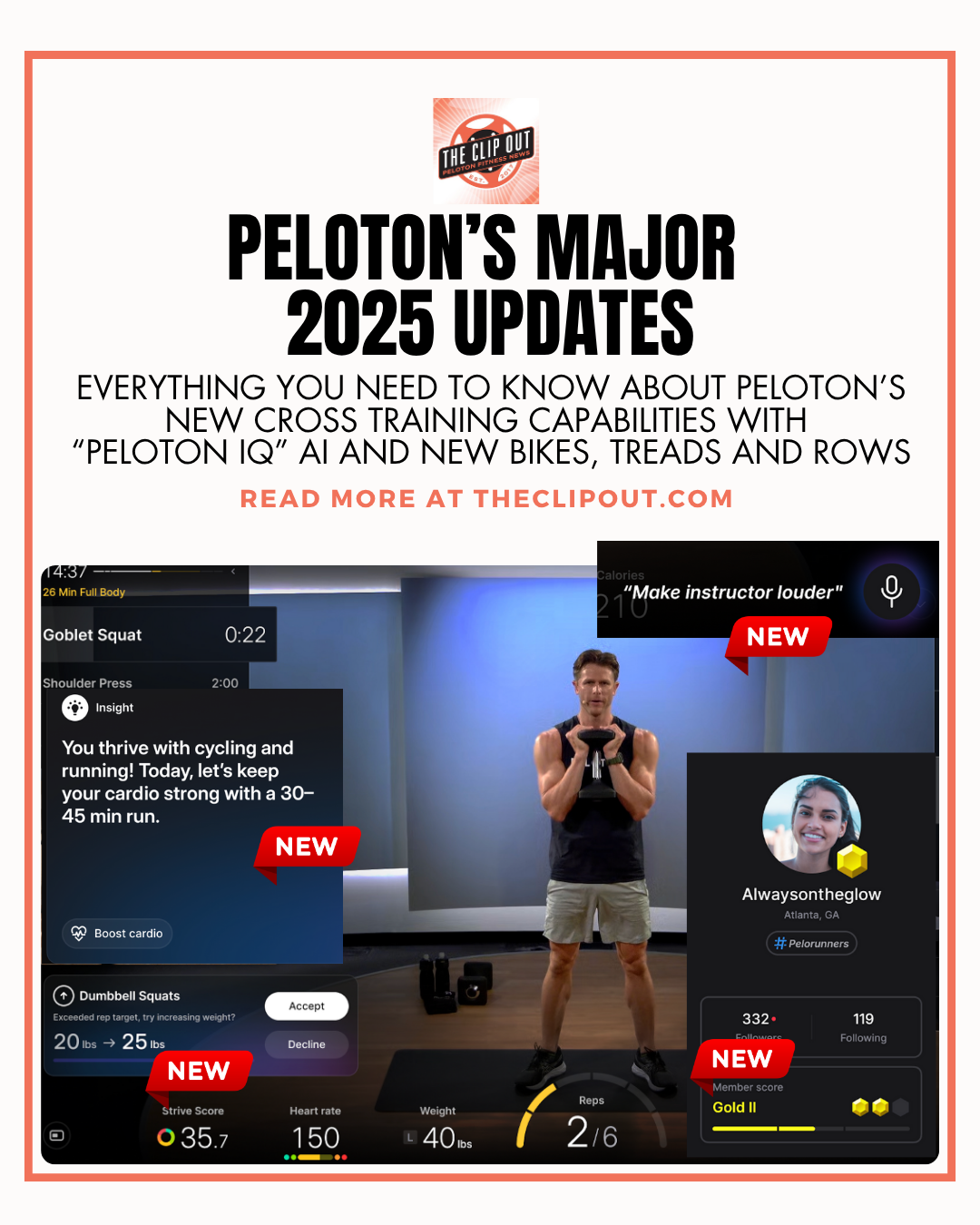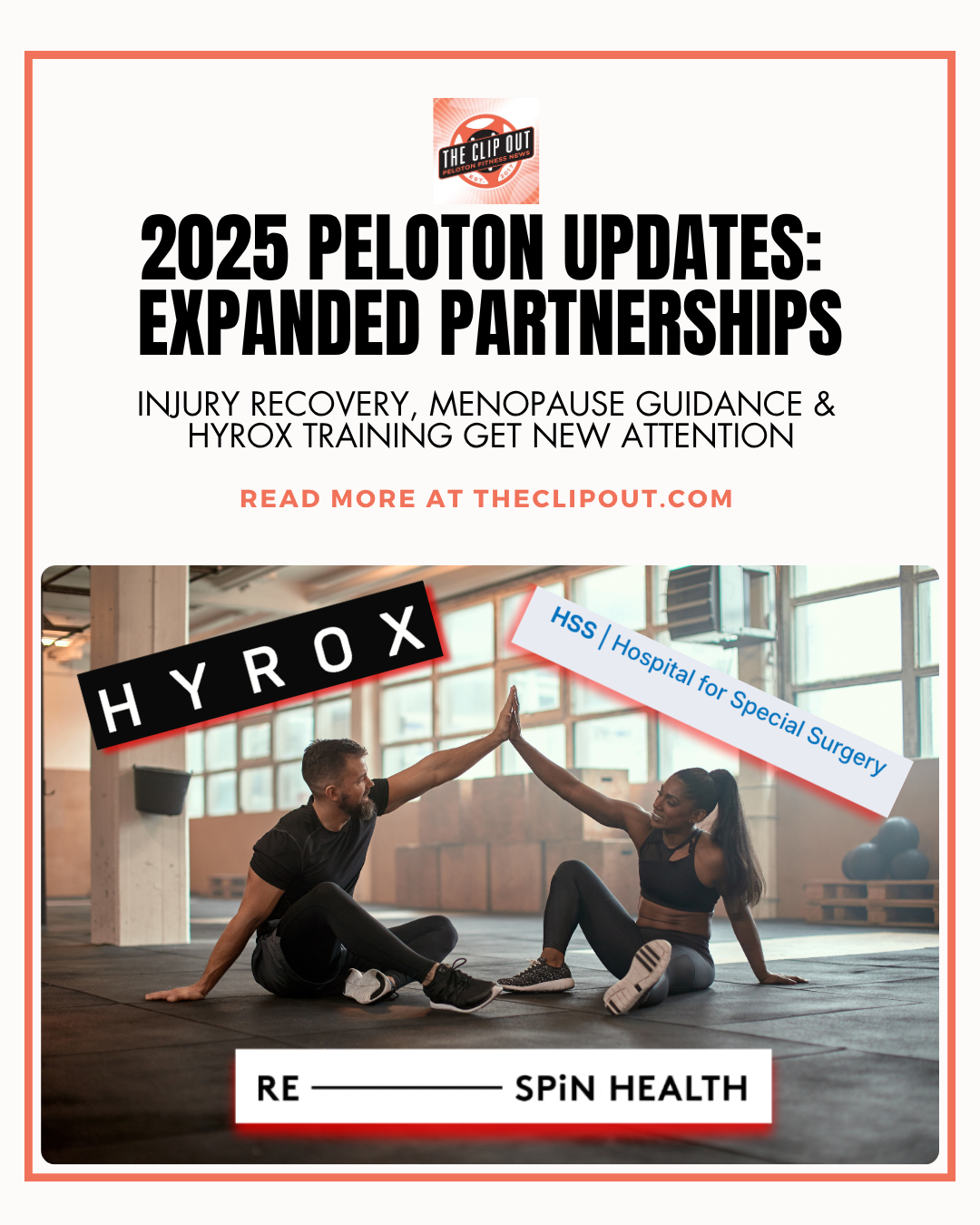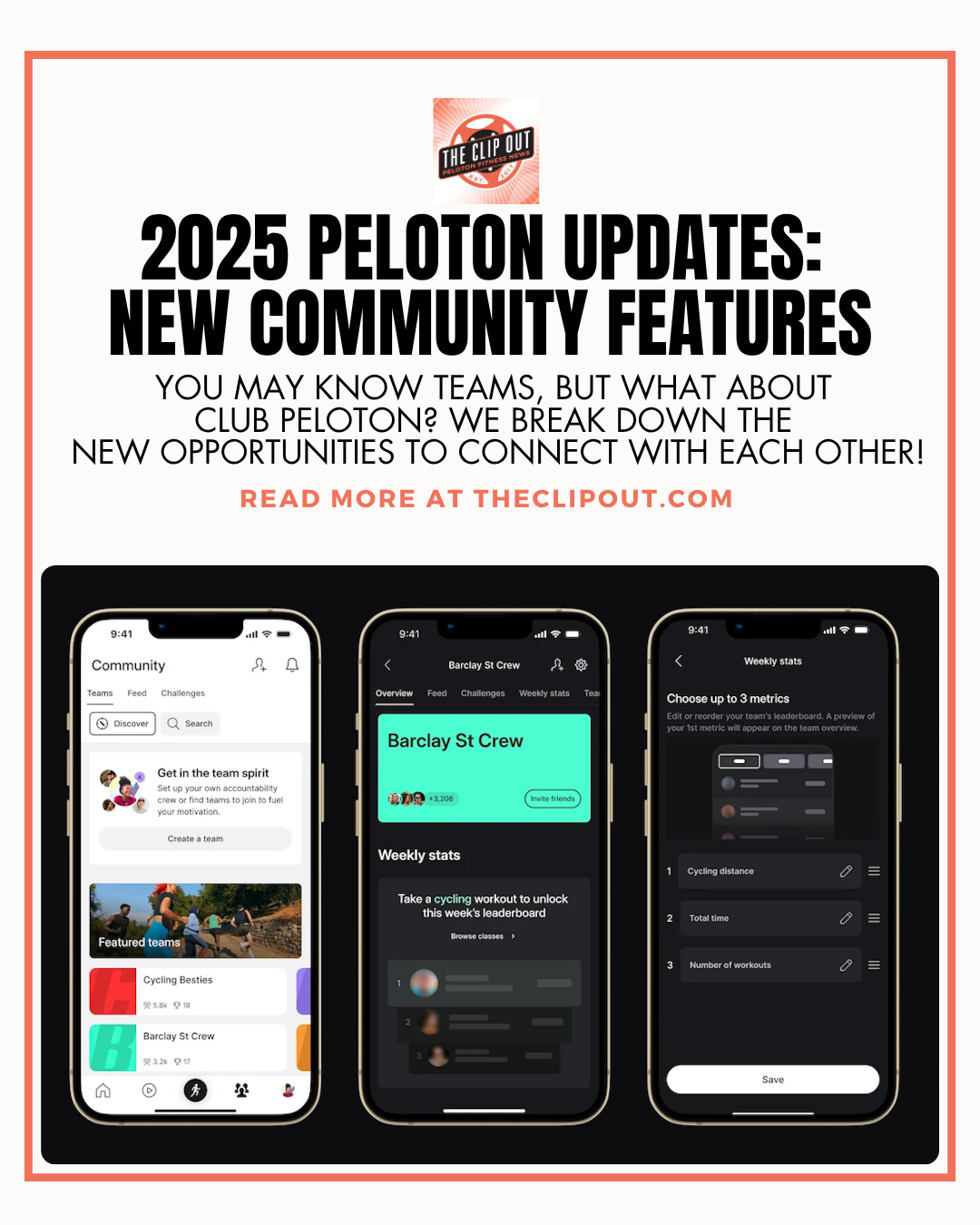Moving Into The World Of Tonal With Nicolette Amarillas
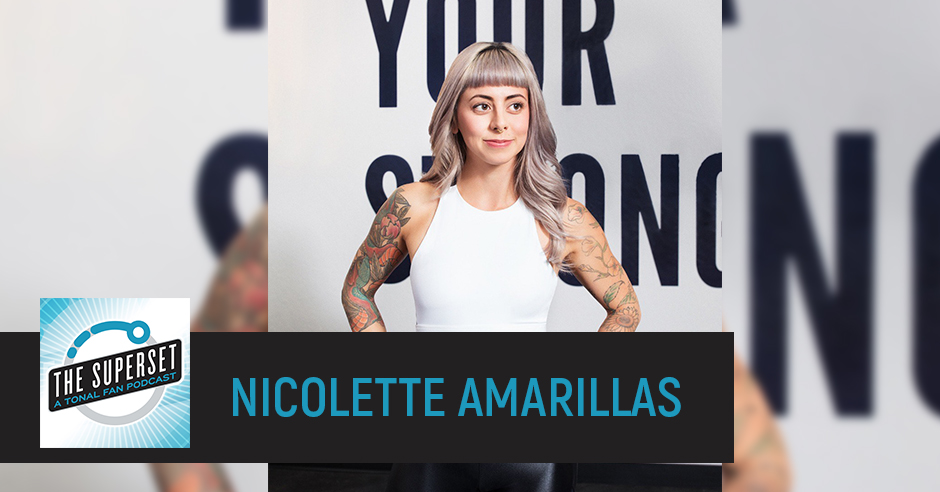
Tonal welcomes a new coach – Allison Tibbs
The OTC hits 5,000 members.
Clippers star Paul George has a Tonal (and it’s in The Atlantic).
Two new Tonal Talks have dropped – “Rebuilding Strength After Cancer” and Dave Azaria discusses the tech behind Tonal.
Coach Pablo will answer your questions on Facebook Live.
Tonal adds all sorts of new workouts.
You can now join multiple programs at the same time.
All this plus our interview with Coach Nicolette.
—
Watch the episode here:
Listen to the podcast here:
Moving Into The World Of Tonal With Nicolette Amarillas
Joining us is Tonal Coach extraordinaire, Nicolette Amarillas. How is it going?
How are you guys doing?
We’re good. How are you?
I’m excited to be here. I can’t believe I’m on a Tonal podcast. It seems a little unreal that this exists. All the coaches are still like, “There are Facebook groups out there that talk about us. Isn’t that crazy?” Now, there’s a podcast, which seems so wild.
Not only are you on but you are also the first instructor that we had on here. You are the Neil Armstrong of the show.
I was going over all the episodes and I was like, “I’m the first coach on here.” I know that Kate was on, the community manager and she’s like, “This leads the way. It’s incredible.” Julius Jones as well. I’m so happy to be here and happy to be the first coach.
Thank you for taking the time to do this. We appreciate it.
Thank you for asking me.
I am curious how life led you to Tonal? How did that happen?
When I was in college, I came to SF State and I was like, “I want to get fit.” My dad is fit in the gym, we look alike and he has lots of tattoos, so we are one and the same. He’s my other half but he worked out a lot as I was younger, but I always played sports, dance, and sings. I went to college and I was like, “I got to work out.” I got a job at 24 Hour Fitness working at the front desk. I then became a manager very quick because they were like, “You’re not a total idiot. Do you want to be a manager?” I was nineteen. I was like, “Sure. I’ll tell people what to do.” A lot of the coaches there were like, “You make more money being a coach. You should be a coach.” I became a trainer and I only trained at 24 Hour Fitness for not very long.
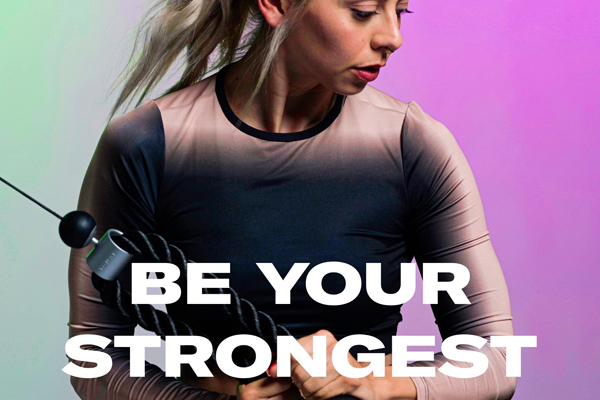
Tonal Coach: The difference between being an instructor for cardio and being a coach is that the process of lifting weight is a lot more difficult. It’s more demanding and requires so much more of you to be present.
I quickly did some calculations one night and I was like, “I could make way more money training three clients on my own in all of the clients I have at 24 Hour Fitness because they pay you nothing.” I started my own business and I train out of a facility called DIAKADI in San Francisco. They’re still the original set of coaches. That’s where we all train out of and Tonal saw us through that website and all of the things that we had been doing around the city. That’s how Tonal found me. Coach Kelly is our head coach. He reached out to me on every platform like in LinkedIn, which I never checked. I saw his LinkedIn message years later. I screenshotted it. I was like, “I’m down.” Instagram, Facebook, email, and I remember reading it and being like, “What is this?” Mind you, Tonal was not a thing yet.
You couldn’t even look it up.
Not even that. There was no actual thing quite yet. It was still very new. They’re telling me this and as someone who’s coming from lifting iron, I’m like, “Really, a machine.” I go to the gym and I lift using a barbell. I’m very skeptical.
You’re like, “Okay, George Jetson.”
“What is this, 2020? No, we’re still in 2016 or 2017.Get out of here.” Coach Liz was like, “Did you get that message from this company?” We had a different name at that time. I was like, “Yes.” She was like, “You have to email them back.” I was like, “Are you sure? That seems crazy. It seems weird.” She’s like, “No. Email them back.” I did. Thank you, Coach Liz, because now we’re here. That’s how Tonal found us through coaching. DIAKADI is the best training facility in San Francisco. Kelly knew when he was looking for coaches like, “I’m going to go there. This is where the most qualified and highly trained.” It’s hard to be able to train out of DIAKADI even though you’re running your own business. You have to be interviewed and you have to go through a long process of being able to take your clients there. There’s already leveled up by being at DIAKADI. DIAKADI made it very easy for Tonal to find their coaches.
As you were telling the story, it sounds very similar to Saturday Night Live and Second City at the beginning. They were poaching people from the Second City left and right because they were like, “They already know what we’re doing. We’ll take all of them.” Backing up really quick, how did you get at DIAKADI? That seems like not trying to disparage your path but a big jump from 24 Hour Fitness to Second City. How did you do that?
It’s a funny story. At that time, I had long, bright purple hair like Barney purple. That’s a story for another time. My hair color was a total accident, technically but I went with it. I loved it. I had it for 3 or 5 years or something. I walk in, I’m 23 years old and I was like, “I’ve only been training for 1.5 years but I know what I’m doing.” They wanted people training for at least three years is the minimum. I was like, “I’m good at my job. I know what I’m doing. I’m like BSA. I have a website, I made it. You’ve got to have me on your team.” They were like, “Okay.”
They brought me through and it was earlier on. I think getting into the facility now is even harder. I was young, I was a woman. I was very determined and I was like, “I will kill it.” They believed me, thank goodness. Thank you, Billy and Mike. They’re the owners of DIAKADI for believing in me. All the coaches are always talking about how DIAKADI has been the pillar and the reason for so much of our success. They’ve built an incredible facility, team, and family. That was our first family and then we got poached. We all still train there but a lot of our life now is Tonal. I started in with my purple hair and that was it.
Your swagger is what did it.
That goes a long way. People underestimate that. I’m curious, when you first started at Tonal, you said they didn’t even have a machine. What did you do all day? Did you do light janitorial work? What were you doing?
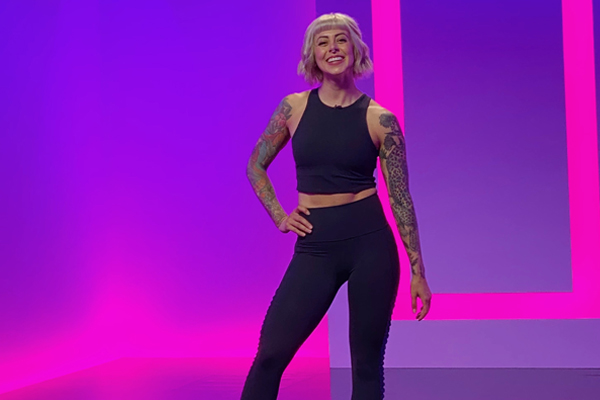
There was a thing, it just wasn’t what it is now. I’m sure you heard it and Aly probably talked about it when he came on. It was strapped to his table. It was a model better than that. It was not this and it wasn’t the one before this. It was the one in between the box and the next one. We weren’t as involved at that time. I was still very full-time with my personal training clients. That is my business and that’s my number one priority, but we would shoot. We’d come in, we’d practice and things like that, but once we came up to launch in August 2018 is when we started to invest more and more of our time. I started to strip down my clientele and have dedicated shoot days. That’s how that progressed. No, I was not janitorial staff. The office was tiny that it would only take one person to clean the space. It was as big as my San Francisco apartment.
Was there a moment in time where the other coaches came to you collectively and said, “Time to ramp down the other stuff and focus on this,” or did that happen organically?
Tonal is all about us doing whatever we want to further our careers. Right now, Tonal is an incredible side hustle. I will say that even with the pandemic, it’s even more so become a bigger part of our lives. We were shooting the coaches from home content and that was very all-consuming. With the new company and we are still new. People still don’t know who we are most of the time. Those things are going to start to change more rapidly but still, be a progressive change. We’re still all running our own businesses.
You see Paul still runs all his outdoor bootcamps. Liz does a lot of her assessments and whatnot. Natalie, me and Pablo, we all have our clients. Jared has his Inspired Fitness. We all still run our own businesses because it’s hard to get a coach to stop coaching in-person. I love my job so I imagine a day where if I am at Tonal full-time or that exists, I’m happy to say goodbye to my clients. That will be one of the most heartbreaking parts of my career for sure. We all are appreciative that we still get to be coaches by nature and in our daily lives.
I have no idea if down the road, Tonal is expecting to do any live classes or to do one-on-one. We all know there’s a camera built into the machine, it’s just not being used. If that in a perfect world were to happen, would that scratch that itch for you? Do you still feel like you would still want that in-person one-on-one time?
I will eventually feel very comfortable transitioning out of one-on-one. I love my clients, but it’s a lot of emotional work. I am there. I am with them and it’s hard. We talk about this as coaches. The difference between being an instructor for cardio and being a coach is that the process of lifting weight is a lot more difficult. It’s more demanding and it requires so much more of you to be present. It’s not about not stopping. There’s pain involved, discomfort, and there are questions. You don’t sometimes know if you’re doing it right. With coaching, it’s so much more about that connection with someone and taking them through an environment in which they’re not comfortable a lot of the time, which is why they’ve hired you.
They’ve hired you so that they can feel more comfortable, feel they can step into a gym, be able to work out and train themselves, and have the knowledge and the awareness to be able to take themselves through a workout. It’s much different than hopping onto a machine or some type of treadmill, or bike. There’s a lot more to it. Being a coach, there’s an emotional tie between you and clients. Some clients they are different than others, or sometimes you’re closer than others. As a coach, you’re taking people through very frustrating and challenging moments. It takes a very deep connection with someone to be able to train them and coach them properly.
The one good thing about not having live classes is that you don’t hear us get frustrated at you.
The whole live thing is interesting. You’ve seen this on the community. The coaches love that linear style that we do with the coaches from home. We want to definitely continue to do that. I still don’t know about live. For people who work out on Tonal a lot, you are like, “How would that work?” I’m not sure because of timing. How much your tempo, if you’ve taken any workout with me. I don’t shut up about tempo. How important that is and how much quicker you move if you’re in a class environment or you’re in a live experience in order to get as many as you can. That might not be conducive to the goal in mind for whatever that workout is.
I never realized that until I started using Tonal because I was never into weights. I never got comfortable with them because it wasn’t comfortable at the gym. I never did it on my own. I didn’t know what I was doing. It has completely changed my point of view and how I work out. I find myself explaining that to people all the time on social media because people ask about that all the time and I’m like, “No, you don’t understand.” It’s a benefit and a plus, in my opinion, that it’s not live because I would not want to be rushing to keep with somebody else. That’s not necessarily, as you said, the best thing for me to be doing or anything.
As you said, there’s a bigger and more difficult barrier to entry to weightlifting. It is a whole other beast that people know, that’s why less people do it. That’s why it’s more difficult and uncomfortable. It pushes people in ways I don’t think that they expect. Even when I go to do a front squat and I’m like, “Shoot. My knee. What’s going on with that?” Those are micro frustrations that you then take in physically and then you’re like, “I have to front squat.” I remember I had that issue with my hip. You don’t get that as much when you’re static on something and even a machine at the gym where you’re seated and that’s all you’re doing or a cardio piece of equipment. Weight lifting is a lot different. It’s a whole different ball game.
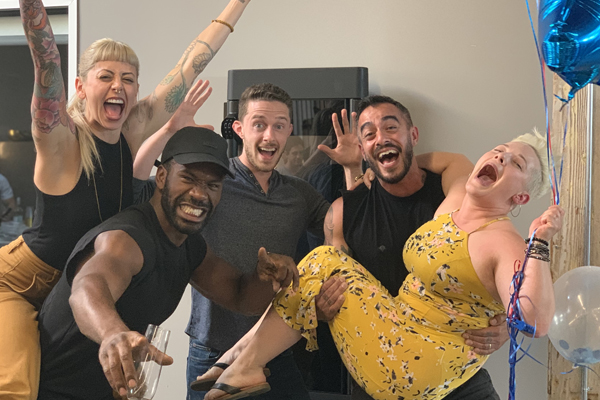
Speaking of how you guys have all of your own businesses, tell us about your business because you do personal training, but you also do the postural training.
I’m a posture specialist. When I went to DIAKADI and I first came in there, what I’ve always done with my career, and even before that, which wasn’t much of a career, but I became a high-level manager at 24 Hour Fitness very young. All I ever did was find a mentor. That was always a big part. Who is someone I’m working alongside that I admire? I like what they’re doing and I want to do that and they’re obviously seeing success. I’m going to rock their brain. I’m going to get to know them, I want to know what they’re doing, and I want to learn from them. As soon as I got to DIAKADI, there was a man named Tom and he’s a big teddy bear. He’s one of my best friends now. He’s a big guy. He is the opposite of me.
I was like, “This guy is busy. He’s making good money. He’s charging a lot for his sessions. He looks like he loves what he’s doing every single day that he walks into the gym. I want to do what that guy is doing. Whatever he’s doing, I want to do it.” He became my mentor and he quickly introduced me to a lot of high-level certifications. I got certified through an institute called the CHEK Institute, started by a man named Paul Chek. I got three certifications through that program. That is a very holistic style of training. It’s everything from your mental and emotional state and how that influences movement, but it also concentrates heavily on the spine. How the way you sit and stand, and the way your posture is, is how you begin and end the movement so it influences the way that your body moves.
If your spine is flex forward and you try and move this way, it’s going to definitely affect the shoulder, the elbow, the wrist, and everything that’s radiating off of your spine. That’s how I train. I trained with the idea that if we can improve the position of your spine, it’s then going to influence all of the joints attached to the spine, the way that they operate, how they move, how mobile they are, how the muscles operate and activate based on the positioning of your body. I got all the certifications and leaned in that for a long time. If you’ve ever talked to any other coaches, when do you start getting a lot of certifications, you start to attract those types of people. It’s crazy. The universe is great. I started to attract people that were messed up physically. I was loving it for a time but it’s a lot.
It’s like a brain exploding all the time. I was like, “Do I want to continue to go in this direction?” which I could. It’s very therapeutic. It’s like physical therapy-type training. I was like, “I want to venture more into program design,” and that’s what I bring to Tonal a lot as my program design knowledge. I started getting more certifications on program design specifically and getting more knowledgeable on different types of program design, in-depth and intricate program design protocols and variables, and things like that. That’s where my training is. It’s this mixture of start clients with this postural analysis, getting to know their body more corrective, getting their body into its best position possible. We then move into the heavy lifting, heavy-duty power, strength, hypertrophy, and all of those things once our base has been established.
Having better posture or correct posture, does that help you lift more?
Yes, and you have to think too. I always use the shoulder as an example or the spine with the shoulder, because even simple movements, if you guys were to slouch forward, try and lift and open your arm, it’s a lot more difficult than when you are here and now, I can easily lift it and open my arms. That’s a simple example of how that can affect it. If you are here and you’re rowing, it’s going to be a lot different than when you’re here and you’re rowing. You also hear Coach Jackson talk about this a ton which is form, tempo, and execution are a huge reason as to why he emphasizes that in his program designed for hypertrophy, It’s because if you’re not thinking about the muscles and you’re not in the correct position, the muscles won’t fire as easily which means you won’t get all of that energy toward that muscle getting bigger so it influences that plus you won’t have as much chance of injury. That always helps you get stronger.
At least it prevents gaps in your journey to being stronger.
Having to take pauses or pause your training because of injury. It’s an important piece to it.
As a short guy, I need all the help I can get. Posture helps in that regard.
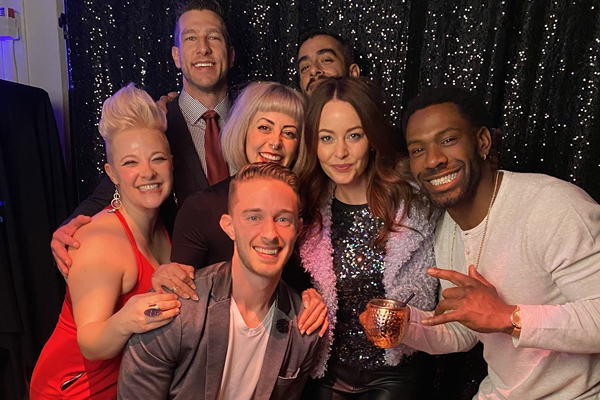
Are we all a short crew here?
5’6”.
I am also 5’6”. I win.
I’m 5’5”. I’ll say 5’6” though.
I’m 5’7” in heels.
You got to look good in heels.
I don’t like to brag.
He doesn’t like when I wear heels.
I can imagine of that being an issue.
That was my only request when we got married. She’s dress and bridesmaids. I’m like, “I don’t care, just no heels.”
She was like, “I have to wear comfortable shoes all the time? Darn it.”
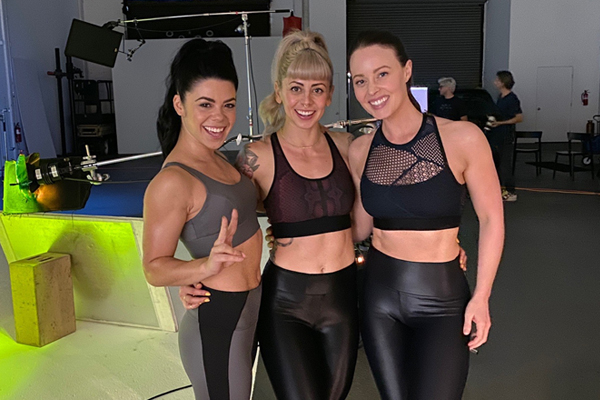
We can’t see them anyway?
I’d be like, “You’re a horrible. I’m going to wear my Nikes every day?”
I have a question about one of my favorite programs of yours, which is the Better Bike and Tread. Were you inspired to do that because you have a Peloton or you just happened to do that? How did that come to be?
Our requests usually come from Kelly. You guys know this. Tonal listened to its community. When a community member or many want or express a need for something, we listen. There’s a big process as deciding what programs are going to be coming up next. We have a lot of say in that. I will reach out to my producers. I put out my quick core burner and I was like, “I posted this core workout on the Tonal Facebook community. Everyone loved it. Can I do it as a workout?” “Great. Done.” It happens like that but then there’s also bigger requests or overarching like, “We need this program.” I had a conversation with Coach Kelly, our head coach, and it was all along the lines of like, “We want something to go along with Peloton. We can’t ignore that so many of our users are also Peloton members and both of these members are starting to mold together as one in a lot of ways.”
I was like, “Yes.” I had started, but I was slowly starting to get more acquainted with Peloton, following the instructors, I had got the bike, and I was all about it. I created the Better Bike and Tread 1, the first one. I was so excited. It’s been a while now. That’s an older program, which is crazy because it doesn’t feel like it, but it’s almost 1.5 years old which is wild. I was inspired because I had seen a lot of people say like, “I want to improve this and that.” It was always helping people with one-off workouts or exercises specifically. To be able to create a program that also includes a stretching day, that’s perfect. Isn’t that for all of us? Let’s Take a Hike program.
You have a recovery day in there. It’s all stuff like you do the stretching.
I do it in Take a Hike one as well but I was excited to create a program that I was so confident would help people PR. Not only on Tonal but Peloton and not get them too sore. I think that’s what the problem was a lot of our programs, up to then, we’re getting people too sore to then be able to perform better on their Peloton. I wanted to create something that was a little bit more balance that wouldn’t cause as much soreness and was quick enough that you can still tack on the Peloton at the end. It’s been a huge hit.
I can verify that it works because I had PRs across the board after I did that. I haven’t done the Better Bike and Tread 2, but I fully intend to and I will have the same success.
It’s gotten as much good feedback for those that have done it. It’s shorter. It’s different. Kelly reached out to me at that time and she was like, “Let’s do a second one. I’m thinking about this method. What are your thoughts?” I was like, “I love that. Let’s work through it.” We established it, worked on some things, and came out with the idea of like, “Let’s work on actual power on Tonal and then power on Peloton bike or whatever bike and tread.” It doesn’t have to be Peloton. That’s something that we don’t have on Tonal either. Not a lot of programs are like that. On Tonal where you’re working on one big movement, working on power for that movement that stimulates those same muscles that are giving you power there, going to get stimulated, turned on, and ready to go so that you can hop onto Peloton. It’s different. I’ve talked about a lot of programming on Tonal especially in the Facebook community. That’s my specialty. It’s important that we undulate the intensity. It’s important that when we do two-phase programs or three-phase like My Making Muscle that we pay attention to the intensity. When I made the second one, I wanted to make sure that it could be a completely different phase and could be done back-to-back. You wouldn’t want it to be similar.
My understanding is you guys keep those programs short so that your body doesn’t get too used to the same exercise over and over again. That was one of my questions. Even though certain moves work, you don’t want to always do that move to get stronger because then your body gets used to it, it’s not as effective anymore, right?
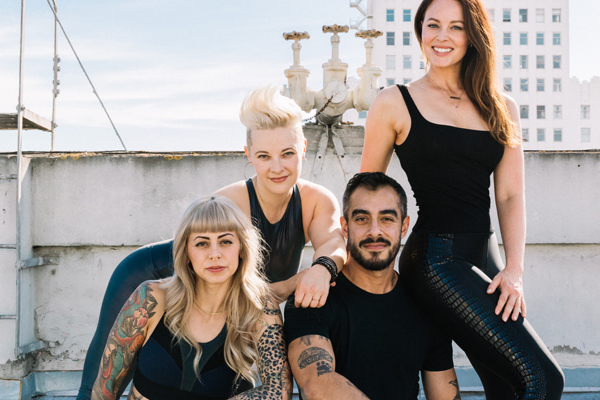
You probably have noticed this like standing overhead press, front squat or goblet squat, bench press, those are your big moves that are in every program. Those are the moves that all the other exercises compliment those moves. We’re trying to get those exercises stronger. Your second block and your third block are all exercises to help get that first big move even stronger than when you start the program. Repeated exposure is important, but we also have to make sure that the people that go into the gym and have been doing the same workout for fifteen years are not going to get much out of that. Your body has gotten used to it. It needs to constantly be challenged.
Even when we go and talk about motivational stuff mentally, your brain needs to be stimulated by change and challenge so do your muscles and your body. It needs to be challenged in order to see change. That’s where a lot of people get confused like, “Why does a program repeat over and over again? Why do we do the same exercises?” It’s very specific. You should repeat the same workout about four times. It’s the sweet spot. That’s the point in which your body starts to get used to. It’s like that fourth week were you’re like, “This feels good now. Sorry, we’re done. I’m moving on.” When you’re like, “This is good. It’s time to change.” There’s a fine line. You want your body to remember get better and learn but you don’t want it to get too comfortable. Lifting should never be comfortable. It shouldn’t be painful but it should never be comfortable. If it’s comfortable, you’re not doing it.
That’s a good rule of thumb, mission accomplished.
It’s a lot different than like, “This hurts.” It’s more like, “That was hard.” Do I want to do that day-in and day-out? Not really. Do I know it’s good for me? Yes. That’s the intensity that you’re always wanting your workouts to be. It’s like, “That was hard. I’m glad that it’s over.”
When you work out for yourself, not for coaching somebody or whatever, do you feel that you’re in that place working out, that you’re uncomfortable, struggling slightly, or do you live in that realm?
You all make it look really easy.
Funny you say that. This is what I always tell my new clients. They’re like, “You made this look so easy.” I’m like, “If I make this look hard, we’d be screwed. If I can’t do it, then how am I going to make you do it? We’d be dead in the water. Where would we go from here?” I also would say that I’ve always been very aware of my body. Form, technique, and coaching have always been my forte. Even helping other coaches with form and technique. That’s something that I’ve taught and mentored a lot. It’s something that I’m better at than some. It’s very natural for me to be connected. That’s another thing that makes it hard for people to lift weight and get introduced to lifting weight because you have to be very connected to your body. You can’t go sit or walk. This very integrated and challenging new thing that you’re moving in every direction that a lot of people don’t get comfortable. I forget if I even answered the question that you asked.
You did. I have a question. I am doing your Power to the Max. I did day three.
That’s the hardest program I have. People think it’s raising the barbell.
That makes me feel better because that is painful. I was legit sore. I was still sore from the first day of the legs whenever we had to do the second day for the legs. I was like, “This is hard.”
You could always take an extra rest day. You know it. Listen to your body.
Since it was different moves, I was able to do it. What I find weird is that and I don’t know if this is normal, my upper body doesn’t get as sore as my lower body. Is that a sign that I’m not doing the form correctly on the upper body? Is that because my upper body is weaker and I don’t lift as much? What does that mean?
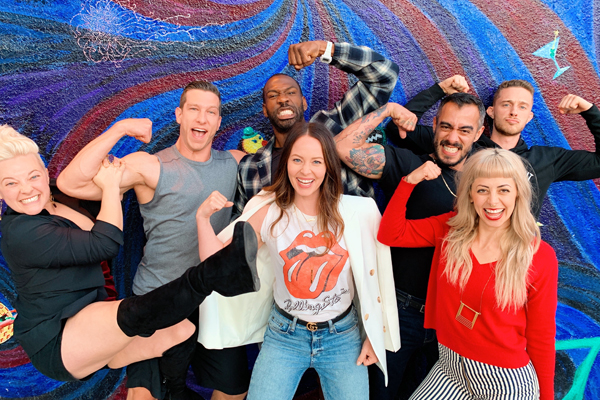
Do you feel like it’s challenging? Are you struggling?
Yes, especially bicep curls, I suck at those. I don’t feel like I should but how you guys always say keep your arms straight? Whenever I try to keep my arms straight and only move just my forearms, I always feel like my right arm has to adjust at the bottom every single time. It’s things like that.
When you’re working out. Do you feel your biceps working?
Yes, but not even close to what I feel my legs are doing.
A lot of the time it is execution even injury. It’s the execution of the exercise. I would say a big thing about the upper body is, if you’re not squeezing the muscle and thinking about the muscle that you want to work, it might not because you’re handling less weight. Your lower body is stronger. You’re handling less weight in general with the upper body. I would think more about the muscle that you’re working. Manually contract it even if you have to look at it. That can help. Send your brain to that muscle every single time. I want you to squeeze that muscle in order to bring up your hand. Imagine my elbow can’t bend unless I shorten and engage that muscle coming up. You’re trying to get yourself sore body weights.
I could get myself sore by squeezing and engaging every single time I lift my hand up. That’s one part of it. Making sure you have enough weight obviously but also form. It’s got into this a little bit earlier in Coach Jackson has talked about. This is how much your form dictates your engagement and how much energy goes to that muscle fiber. If you’re not doing the exercise right, the correct muscle might not be working or it might not be the prime mover like it should be. If it’s not then, it’s not going to get sore. I would re-evaluate form. For any exercises you feel like you’re doing that you’re not getting sore, find the Form in Five in the Tonal Facebook Community. Dive into those and make sure that you’re getting all into the nitty-gritty of the form. That would be helpful. See if that improves anything.
Mind you though, I do find sometimes with my upper body that if my weight is too heavy, I don’t get a good form, and then I don’t get as sore. If I lightened the load a little bit and I can concentrate on form and getting a row of full-range versus if it’s too heavy, I get to here instead of here, there is a big difference. It might be an issue of I decrease the weight a little bit so that I can engage even better and get a full range of motion and concentrate on my eccentric movement and things like that. If it’s too easy, take it up. If you feel like you’re not getting the correct form, take it down and then engage more.
That’s good advice because a lot of people feel like, “If you make the weight lighter, you’re cheating.”
I’m not a numbers girl. I don’t give a poop about numbers and the string score. Although I am stoked on my weekly streak, that’s the number I like to track but I get it. I did this because we had to do our coaches from home workouts and it gets funky when we’re doing those. I created a separate account for my coaches from home. You can always practice your movements on another account too and play around with weight that feels better and then take that back into your other account as well.
That’s smart.
That’s a good tip as well. You should do this for a living.
Before, Tonal is all about coaches doing whatever they want to further their careers. Right now, Tonal is an incredible side hustle. Share on XIsn’t it crazy? I feel like I could get paid good money for this.
You would need it living in San Francisco.
You’re telling me but apparently house hunting to rent. Although rent is dropping because of everything that’s going on.
How much work goes into creating classes and programs? How do you keep it fresh? I feel like as someone who knows nothing about this stuff that there would be a finite number of things that you could tell people to do. How do you keep rearranging those to not be repetitive?
Programming-wise endless, but that’s because I like specializing program design. That’s my bread and butter. I love that. I feel like there’s always a way to change things up even if you’re limited on movements. Programs take a long time to make. They’re not making a playlist and then throwing in things. It is like other formats and other companies. It is a lot. We get a request, we go over this big template, and we have our big list of exercises that exist on Tonal. The first thing I do is concentrate on what’s my goal. We’ll get what the goal is of the program or the workout. Start to refine what’s my time limit. What’s the intensity? What’s the beginner, intermediate, or advanced?
From there, I start to pick movements and I pull movements. The biggest thing we have to concentrate on which is one of the hardest parts about creating our programs on Tonal are the arm adjustments. Making sure that the arm adjustments aren’t too crazy in between exercises. That’s hard because there are times where I would have made a completely different workout, but because I don’t want to have someone to have to go from a barbell bench press to arms going up and doing a pull-down with the handles, that would take a long time in between and be very cumbersome. That’s a big thing that we look at. What is going to be the experience for our members when they do this workout or this program? Is it going to be fluid?
I’m making a new program right now and there’s quite a bit of adjustment, but it’s an advanced program. I’m going to tell them ahead of time. There’s a lot of adjustments, but you’ll get a better workout because we did this. We get it all together then pick the reps, the intensity, and how many sets. If there’s going to be an advanced weight mode feature, then we go through the process of explaining to our production team why did we choose all these exercises so that they can talk about it appropriately, name it, and all those things.
We give name suggestions and we tell our team like, “This is why I wrote it. This is what’s important. This is what I want my members and my clients to pull from it when they do the workout.” It gets sent for approval. It comes back with the templates to write all of our RVO. It’s a process. It takes us time to think about what we’re going to offer and something that’s going to live on there forever. It means a lot to us to make sure that it is 110% the best thing that we can put out there. Our programs don’t get pushed down very quickly. It’s important to put out something that we’re proud of that we know people want and need, and make sure it’s top quality.
Is it a month, two weeks, or six months? How long it takes?
I forgot the part where we have to test the program out. Before I get it submitted, I’ll do it and be like, “That move wasn’t as challenging as I thought it was,” or “I didn’t like that switching back and forth. I’m going to make an adjustment.” I do it a couple of times, each one. The process of making it and doing it on Tonal, going back and forth with myself, usually it takes at least a week.
How many programs do you think you create in a month?
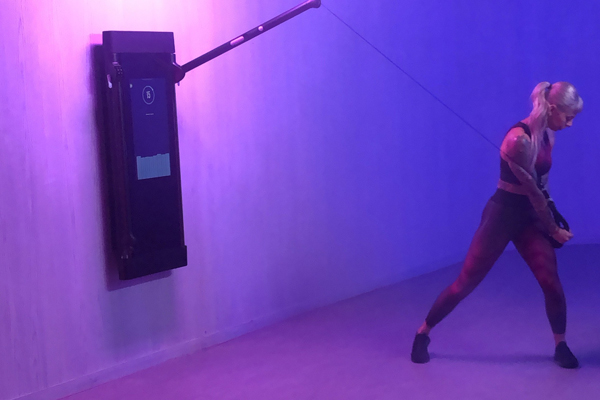
In Tonal or just me?
For Tonal.
It depends. Each coach is making something every month. We’re always writing a program whether we’re filming it in that time or later or whatever it is. Each coach is always creating something. Right now, some are doing coaches from home. Some of us are in the studio. We’re all, at some point, contributing in some way writing programs every month.
How many do you think you make?
I think I have 12 or 15 programs. I have the most programs out of any coach on Tonal. I think it’s because I was the most available to shoot more often. It’s the only reason. I don’t know, I’m the best. Just kidding. Not at all. It is because I was like, “I am going to make myself very available to shoot. When are you coming to the studio?” That’s all it is.
It’s because you started a 24-Hour Fitness and you had to work 24 hours. I was thinking that if you have a program with too many adjustments, a little tip, buy another Tonal.
Should I say that in my next program and be like, “If you are going to start this program, just so you know, you have to have two Tonals.”
Put a barbell up on one.
Shout out to Julius Jones.
Go to Julius’s gym to do your workout.
You want your body to remember to get better and learn, but you don't want it to get too comfortable. Share on XIt’s two classes simultaneously.
I remember in one of your classes, you talked about how you have a bunch of little siblings. Are they all active? Is your whole family active? You said your dad is.
My dad is active. My dad and I are a lot alike. My family is funny. Should I tell you that? It’s funny. My mom and my dad had me when they were young like twenty years old. They never were married or anything. There are no good friends, my mom and dad, they’re great friends. At three years old, they split up. My mom and my dad each got remarried and they got pregnant and had babies twelve days apart. I went from being an only child when I was nine to having two sisters within twelve days but they’re not related to each other but I’m related to both of them.
They grew up close because they’re the same age. My parents were good friends. That’s funny. My mom also has my little brother, Jacob. Jacob is fourteen years younger than me. My sisters are nine years younger than me. My brother is fourteen years younger than me. I grew up more of like a parental role in a lot of ways. I feel like in the last couple of years, my sisters and my brother finally like, “You’re cool, I guess.” “You guys, I am so cool. Don’t treat me like your mom. Treat me like the cool older sister that I am. Please, I’m begging you.”
Kids never appreciate those things. They never do.
I always thought, “If I had an older sister that was in her late twenties while I was a teenager, that would have been the best resource ever.” They never told me any of their secrets. I had to pry it out of them. Now, they’re telling me their secrets. They didn’t do that much in high school.
It made me think of when Brian was playing rock band all the time. My son was eleven at that time. He would always play and you could pick different Guitar Heroes as your avatar. He would always play Zakk Wylde who has a band called Black Label Society. He used to play for Ozzy Osbourne for a long time. I showed him one day, I’m like, “Here’s a picture of me and Zakk Wylde.” He’s like, “Yeah.” I was like, “It’s me hanging out with the guitar player of Ozzy Osbourne.” He’s like, “That’s okay, I guess.” I’m like, “Whatever.”
That was cool when that happens. How long ago is that?
It’s so funny now because we’ll be talking about something and he’ll be like, “Who’s that?” He’s fifteen-year-old and my thirteen-year-old and they have no idea who we’re talking about musically. It’s like, “This is so depressing.”
You guys have two kids then?
I have two boys and she has a girl.
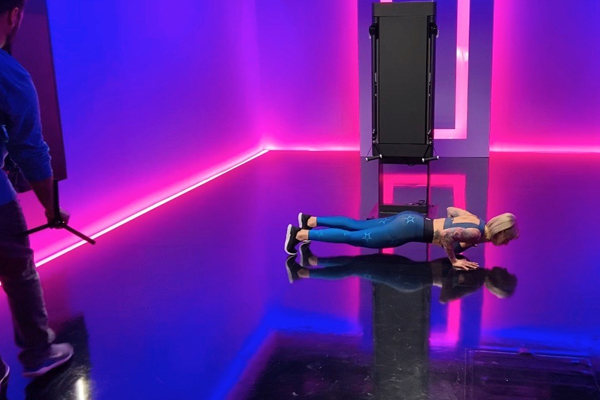
Three?
Yes. His eldest doesn’t live with us. The two youngest live with us.
Those are quite the age.
Thirteen and fifteen.
They’re teenagers.
I’m sure my daughter hit teenage years when she was ten.
That’s usually how it happens with girls.
She was right on time then.
I feel like my sister especially Haley looks like a teenager when she was five. She grew up listening to Brittany Spears, dancing in her bedroom, and it’s like, “Where did 10, 11, 12 go?” She’s five years old. She’s like me. She was always performing, karaoke-ing, constantly here and ready to go. She was ready to walk through but I feel girls are like that. They grow up a little bit quicker when they’re younger.
What is your favorite part about working at Tonal?
It’s being in the studio. Our production team is family. We have so much fun. You guys have seen some of the outtakes of our shoots and stuff. We’re constantly goofing off. It’s a conducive environment to learning how to be on camera. I went to school for TV and Radio Broadcasting on Camera Journalism. I practice for four years, talking in front of a camera, and doing all the production end of things. This is a whole different ball game and Tonal believed in us. When they found us, it’s not like we were on camera personalities already. We were coaching. We were all coaches.
Lifting shouldn't be painful, but it should never be comfortable. If it's comfortable, you're not doing it. Share on XLiz has done some acting. I went to school for being on camera. Pablo does a lot of his theater work. Natalie is a dancer. Paul was a professional football player. We all have these moments where we’ve been in front of people, but they believed in us and have invested in us learning how to be better on camera and more comfortable. Now that it is officially, it’s so much more comfortable and we have a routine. It’s so much fun. I love it. If I could be at the studio every day, that’s what I would want my week to look like. That’s what I hope for.
It’s good to have a job that you love.
I love coaching too, but I went to school for TV and Radio Broadcasting on Camera Journalism for a reason. I wanted to be on camera. I enjoy performing. I was a singer and a dancer. I love that. It fulfills both of those needs. It’s crazy. I became a trainer and then now I’m using degree that I never thought that I would use. As soon as I started coaching, I was like, “I’m not doing that again.” Here we are. It’s a perfect mix of two.
Who uses that Mass Communication degree? Nobody.
He has one, that’s why he’s saying that.
When I found out I was like, “You’re going to have to move Timbuktu and serve someone coffee for ten years.” Maybe you’ll make money after that. I was like, “No, I’m not going to do that to maybe get on camera.”
What about the Tonal itself? What’s your favorite part about it?
My favorite feature on Tonal is the Weight On and Off. That’s magical. That is the most clutch part about Tonal is being able to turn the weight on and turn the weight off. I love the Eccentric Mode because that’s something that’s impossible to do in the gym. You can’t be at the top of the bench press. You’d have to have two friends pull the weight off at the exact same time so the bar doesn’t fall over. It’s impossible to do. I would say Eccentric Mode and being able to turn the Weight On and Off are two of my favorite things and having coaching. I program all day, the last thing I want to do is program for myself.
Now that I don’t have to program for myself, it is incredible. I never would follow my programs in the gym. I’d always have an excuse to being like, “I’m going to do a new program this weekend.” I couldn’t stick to it because I was constantly getting inspired by my clients’ programs. I’d be like, “I want to do that program.” Now, I have a program. I’m always on a program. All the coaches are different, but I’m always doing one of the coaches’ programs all the time. I also want to know what are our members feeling, how has this experience, how can I make it better, how can I improve my performance, and learn from my fellow coaches too.
Do you ever take your own classes and is it weird?
Yes, but not anymore. It used to be weird because it was awful. Have you done our old workouts?
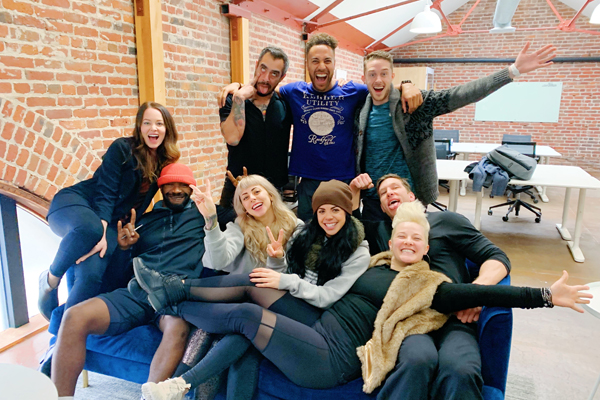
You’ve come a long way is what you’re saying.
Thanks, Tonal, for believing us. We’re also working with an environment that’s there’s no music. We are trying to coach. That’s what coaching is. We don’t work out with our clients when we coach them. It truly is a coaching environment. We’re always learning on how to make it better. I do my own workouts and programs. I’ll do them all the way through. I want to be able to speak to it and answer questions when people ask. I do that. I write my programs and I like them. I do them because I do think that they’re great workouts and their workouts that I like to do which is naturally how I program. It used to be weird because it would be like, “Oh.” The way I said that, “What am I wearing? How do my looks and my hair doing? What is that?” I thought that it would be cool.
I know that everybody does that because when we started podcasting, Tom was like, “You need to prepare yourself when you hear your own voice. It’s going to be weird.” It is very weird.
Now you’re used to it. It would be weird to not have the headphones on but the first time you put the headphones on and you hear what you sound like, not what it sounds echoing around your own noggin. You’re like, “What?”
What is this? Is that me?
Thank you so much for taking time out of your busy day to join us. Before we go, let people know where they can find you on social media, your webs, and all that stuff.
My handle on Instagram is the best way to reach me which is @Coach.Nicolette. I communicate with a lot of Tonal members and clients through there and the Facebook Community. That community is so big now. It’s crazy. It’s a lot harder to keep up with the communication on the Facebook Community. I try and get in there as much as possible but it’s difficult. My website is NicoletteAWellness.com. I have a lot of virtual options as far as training even when we’re not in a pandemic. I do a lot of postural assessments and movement assessments if I’m not bringing on new clients because I don’t bring on many clients. A lot of my clients I’ve had for seven-plus years. My newest client is two years.
That says a lot.
It does.
I have one client that started with me during the pandemic. Other than that, I’ve had everyone for a long time. I don’t oftentimes bring on new clients so being able to do one-off assessments and things like that are a big part of my business. People reach out to me a lot to do movement and posture assessments. From there, they get a program that will help improve their posture and tips on how to move better. Those have been a great resource for a lot of people if they can’t train with me. As Tonal starts to get busier, I will naturally be training a little bit less and less. It’ll be even harder to be an actual client.
Thank you so much for talking to us.
If you're not doing the exercise right, the correct muscle might not be working, or it might not be the prime mover like it should be. Share on XThank you. This has been a blast.
Thank you, guys, so much. I’m so excited. I don’t think I said anything too embarrassing either which was remarkable.
Is there anything embarrassing you would like to say before we go?
How can I make this more awkward? This was too easy.
We’ll try harder to make it awkward next time.
Yes, most definitely.
Where were you on the night of July 14th, 2012?
Let’s get the spotlight on you.
You guys don’t want to know what I was doing when I was in my early twenties. Who knows what I was doing?
Join us next week for part two.
Are we talking about Nicolette before she became a creator?
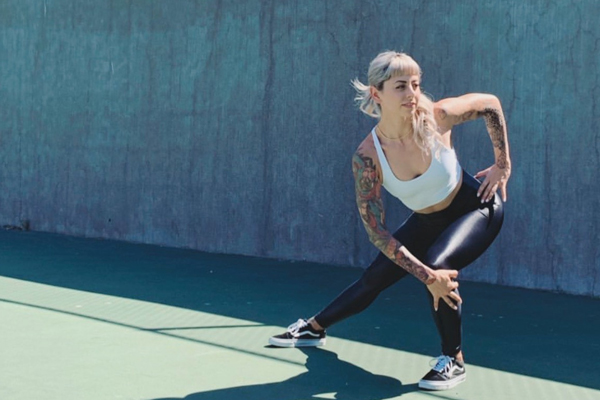
There will be a charge for that one.
That goes behind the payroll.
Thank you so much for doing this. We appreciate it so much.
Thanks so much.
Important Links:
- Tonal
- Kate Telge – Previous episode
- Julius Jones – Previous episode
- Aly Orady – Previous episode
- DIAKADI
- CHEK Institute
- Tonal Facebook Community
- LinkedIn – Nicolette Amarillas
- Facebook – Nicolette Amarillas
- @Coach.Nicolette – Instagram
- https://NicoletteAWellness.com/
- https://www.Tonal.com/
About Nicolette Amarillas
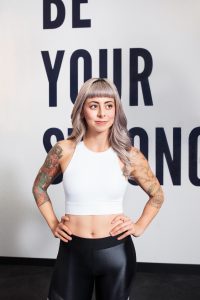
My deep interest in the body and love for physical activity led me to get certified as a Personal Trainer in 2011. I have dedicated the last 7 years to helping clients improve their quality of life through a holistic approach to pain relief, strength, and overall health. My past struggles and limited access to healing has inspired me to guide others towards a fulfilled and happy life as an exercise coach and mentor.
As a postural specialist, I treat a variety of structural and muscular imbalances. I build clients programs from a solid structural base, by first eliminating pain through postural imbalances, addressing lifestyle and then ultimately guiding them towards getting stronger. My postural background coupled with my vast strength coaching education produces incomparable programming & guidance by incorporating scientific data, research, and my education. My programs are dedicated to showing clients that balance between hard work, dedication, relaxation and fun are possible in a life of fitness and health. I pride myself on being the best health advocate possible by showing clients how to fall in love with movement and the amazing things their bodies can achieve.
Latest Podcast
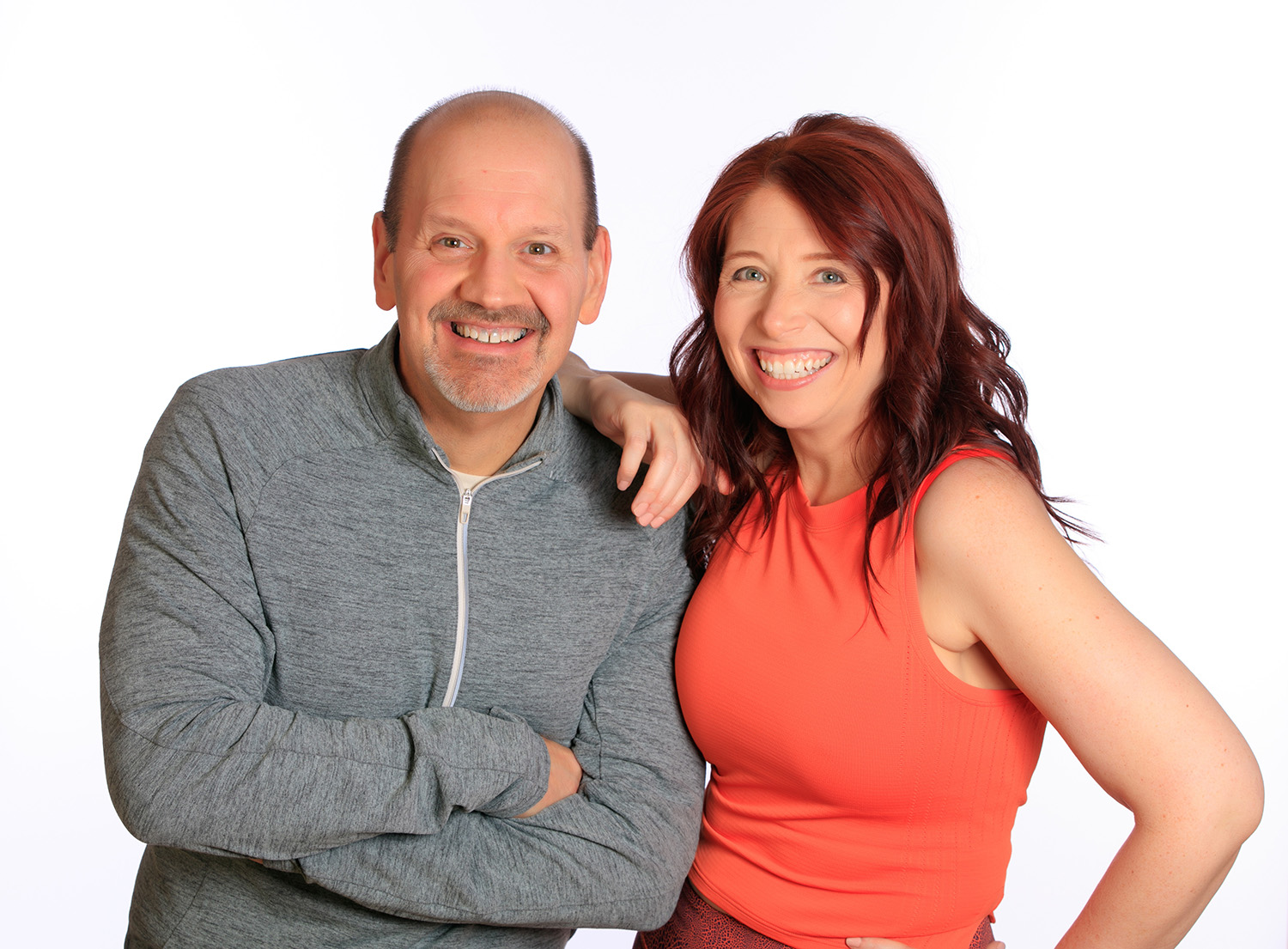
Subscribe
Keep up with all the Peloton news!
